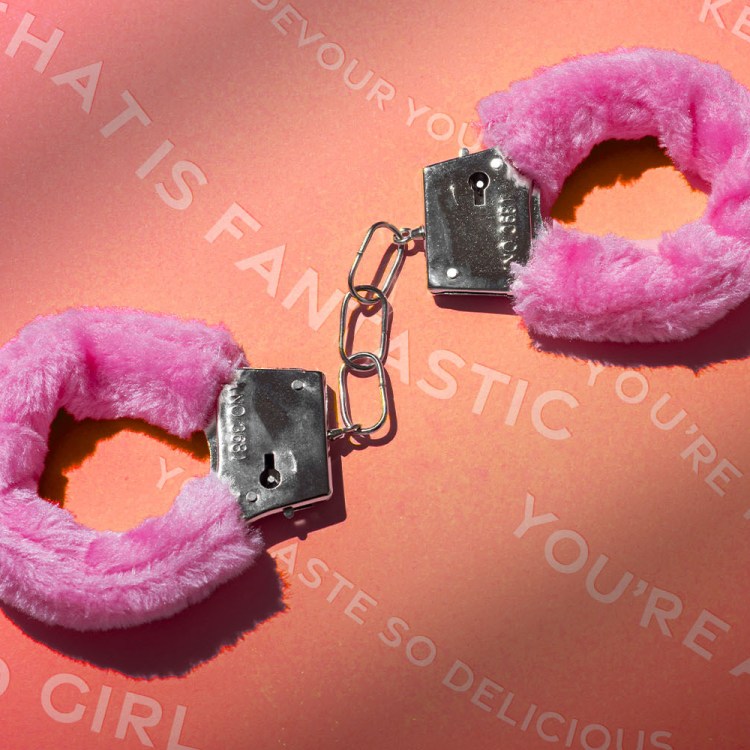As someone with zero interest in the Marvel Cinematic Universe, I never thought I’d start an article like this, but in the 2011 film Captain America: The First Avenger, an amusing misunderstanding takes place when the titular hero mistakes fondue for a sex act after love interest Peggy Carter informs him she and Howard Stark shared a pot of melted cheese. Stark later informs a flustered Captain that “fondue is just bread and cheese, my friend.”
But is it? As it turns out, the internet happens to be home to a smattering of evidence to suggest that fondue — while not as explicitly sexual as Captain America may have feared — might in fact be a sex thing. As writer Alec Scott noted in an article on the rituals of fondue earlier this year, “The hot, sticky, gooey dish seems to have become associated, in the popular mind, with sex,” and that association would appear to predate Captain America’s big screen debut by several decades.
Like fellow sex thing the waterbed, fondue’s place in sexual culture seems to be a product primarily of timing; both entered the American consciousness around the time of the sexual revolution and became associated with the spirit of the times. Still, as journalist David Sax wrote in his book The Tastemakers: Why We’re Crazy for Cupcakes but Fed Up with Fondue, “It is no coincidence that the fondue trend rose in concert with the budding sexual revolution in North America.”
To clarify, “I don’t think fondue drove the sexual revolution in any way,” Sax tells InsideHook. “But the timing was fortuitous, for sure.”
The dish, which has its origins in 18th-century Switzerland, became popular in the U.S. in the ’60s and ’70s, when the country was in the midst of a sexual awakening. “Sometimes the food makes the times, and sometimes the times make the food,” says Sax. “I think the latter happened with fondue. It became popular in America just as attitudes about sensuality, physical proximity and other social norms were loosening up.”
While a cholesterol-heavy pot of melted cheese may not seem particularly sexual at first blush, it is a dish that requires a significant degree of intimacy. A dining experience meant to be enjoyed with others, fondue demands close proximity, shared food, as well as shared cooking and eating utensils. Essentially, if you’re eating fondue, it better be with someone you’re comfortable swapping spit with. To this end, “Fondue is by nature intimate,” says Sax. “Can you imagine eating fondue with, say, a bunch of professional colleagues at a conference or with elderly relatives? Probably not.”
At the height of its mid-century popularity, fondue was usually shared among friends at suburban “fondue parties,” which Sax cites as the primary origin of fondue’s sexual undertones. (Though both he and Scott note rumors of a longstanding Swiss tradition of forced kissing between fondue diners who lost their bread in the cheese — “Sort of Swiss Spin the Bottle,” as Scott puts it.) Inviting friends over to try out a trendy, funky new dish of melted cheese and chocolate “was really an excuse to get people together in a living room with a bunch of drinks,” says Sax. While an invitation for fondue may not have been code for sex, per se, it’s not hard to imagine a bunch of ’60s swingers swapping partners around a pot of fondue in someone’s living room. And even if the idea of fondue as the unofficially official food of mid-century swingers is a bit of a stretch, the idea of things heating up among a group of people getting buzzed on various substances isn’t. As Sax puts it: “You get a bunch of people together with drinks, and yeah, sex happens, fondue or not.”
Scott also links fondue’s surprisingly sexy reputation to its rise during “the so-called sexual revolution,” painting a similar scene of disco-era debauchery: “After a day of skiing — something that also went big in the 1970s — you put on some Dr. Hook in the chalet, turned down the lights, lit all the candles and fire, shook out the bearskin rugs, put some shots of kirsch out and, you hoped, one thing led to another.”
While the days of sexy chalets and possibly horny fondue parties may be behind us, (with the exception of a brief Mad Men-inspired renaissance in the 2010s) fondue still maintains something of a romantic vibe today.
“You see fondue recommended a lot as a Valentine’s Day, at-home dish — feeding each other from the forks, that sort of thing. The cosiness of it,” says Scott.
“It’s something shared with close ones, and has a strong romantic association — that whole melted chocolate and strawberry thing,” echoes Sax.
Still, fondue’s more risqué reputation lives on in various pop culture niches. Scott cites a 2020 romance novel called, His Flirty Fondue, in which rival fondue chefs — “named Brie and Colby, of course” — compete to win a fondue championship and presumably get it on.
Unsurprisingly, Urban Dictionary is also home to multiple NSFW entries for “fondue.” While a few reference the Captain America mixup, others list “fondue” as verbal euphemism for a different f-word, while still others describe a variety of elaborate sex acts. Of course, you can’t believe everything you read on Urban Dictionary, and it seems unlikely that many of those uses have actually made it into the mainstream sexual lexicon.
“The only one I’ve actually heard is in gay circles, when someone spends the night with someone out of their league: ‘He totally got the fondue last night,’” says Scott. “It had sort of a brief flicker in the mid-aughts, but I haven’t heard it since.”
Ultimately, the answer to “Is X a sex thing?” is almost always: “Yes, kind of.” Why? Because pretty much anything can be a sex thing if you make it one — even a pot of melted cheese. Just don’t tell Captain America.
This article was featured in the InsideHook newsletter. Sign up now.
























